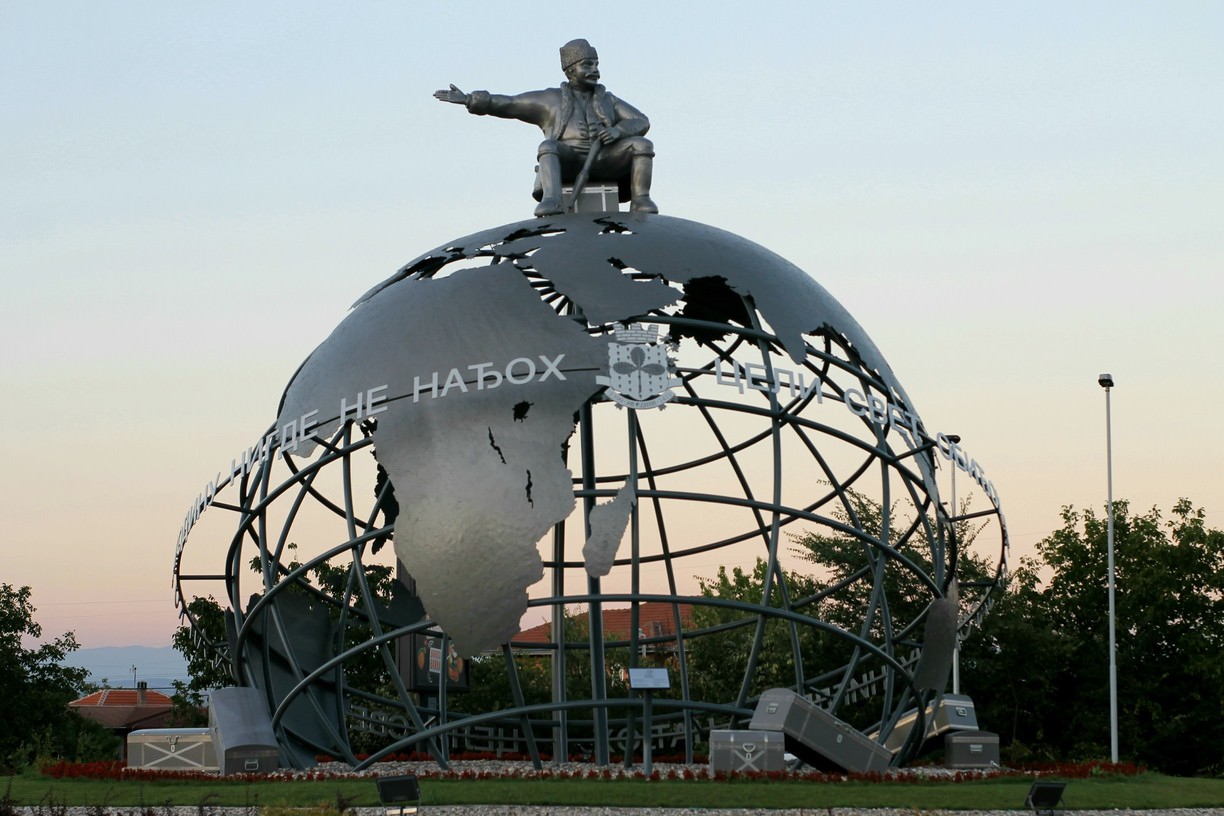
Jagodina and its surrounding
Jagodina is already a well-established tourist destination, located 120 kilometres from Belgrade, 100 kilometres from Nis, 3 kilometres outside the highway E 75 (A1).
Tourist complex in Jagodina includes the Zoo “Tiger”, Aqua Park with many slides and other features suitable for children, Wax Museum, Heritage Museum and Museum of Naive Art. Djurdjevo brdo and Araclijski potok represent an oasis of greenery with a picturesque paths that lead along fountains (122 fountains) to the waterfall, which has become the latest landmark of Jagodina.

Zoo
The Zoo in Jagodina offers various contents, with many different animal species. You can find out in what type of objects 250 species with over 320 specimens are settled, whether certain species’ intellect is on par with humans, how big the young are upon birth, how long some animals can be underwater, and many more interesting pieces of information if you visit us and take a peek into this amazing animal world located in the tourist part of Jagodina.

Aqua Park
Aqua Park in Jagodina is located in the most beautiful part of the city, within the sports and tourist complex. It covers an area of 50,000 square meters. It contains 8 pools for sports and recreational activities with water attractions for children and adults, a system of slides with a total length of about 600 meters, which are closely monitored by licensed lifeguards. Aqua Park contains courts for five-a-side football, basketball, handball, volleyball, table tennis and a playground for children with swings and seesaws. The entire Aqua Park is illuminated with floodlights for night sports, cultural and entertainment events. Within the park, there are facilities for entertainment, enjoyment, rest, dining and refreshments. Free parking lot for 1,200 cars is provided for all visitors.

Manasija Monastery
The Manasija or Resava Monastery is one of the most important monuments of Serbian medieval culture and the most important building that belongs to the so-called “Morava school”. It belongs to the Eparchy of Branicevo of the Serbian Orthodox Church. The Manasija Monastery is the endowment of Despot Stefan Lazarevic. Its construction began in 1407, and was completed in 1418. The monastery church is dedicated to the Holy Trinity, and it is consecrated upon the Holy Spirit’s Day. The whole complex is surrounded by large walls that were used for defence. It was a fortified whole consisting of a total of 11 towers, of which the Donzon Tower, better known as the Despot’s Tower, stood out. Although only a third of the frescoes in the monastery have been preserved, the frescoes of Manasija are among the greatest achievements of medieval painting. During the works on the reconstruction of the monastery church in Manasija at the beginning of the 21st century, earthly remains were discovered, which are considered to belong to Despot Stefan. DNA analysis of these remains confirmed with 99.9378% accuracy that it was in fact the son of Prince Lazar

Wax Museum
Wax Museum is one of six such museums in Europe, and the first of its kind in Serbia, with historical figures, from St. Sava to modern-day celebrities. The museum covers 450 m2 and has 29 wax figures in its permanent display. So far, about 50,000 people from different parts of the world have passed through the museum – from Palić to Vlasotince, from Turkey to Poland, from Nigeria to Vancouver. “Wax figures of Serbia” is an exhibition that displays the most distinguished people of our history, culture, science and sports. We wanted to make a time machine, a frozen picture of the time in which we live. In addition to the displayed figures, original costumes, weapons, copies of rare books, models of monasteries and war flags are also presented. We wanted to showcase the period and environment in which the greats of Serbia lived and worked.

Resava cave
Resava cave is located 20 km from Despotovac, within a limestone hill called Babina glava, on the banks of the karst field (Divljakovac). It is one of the most beautiful caves in our country. It is 4.5 km long. For now, 2830 m have been explored in detail, and about 800m are arranged and available for visitors. It is one of the oldest examined caves in our country, about 80 million years old, while the old rock formation is estimated at 45 million years.

Kalenic Monastery
Kalenic Monastery is one of the most beautiful Morava-style monasteries. It was named after the long river of the same name, which flows along the southern side of the hilly Levac and flows into Velika Morava. It is located near Trstenik, at the end of the local road across Velika Drenova and Oparic. The monastery church is dedicated to the Presentation of Mary. It has an octagonal dome and a three-bearing base, and it is located on a pedestal, so it looks more elongated. The facades, typical of the Morava-style, are made of alternating arrangement of stone and brick, and are richly decorated, so that the Kalenic Monastery is one of the most decorative monasteries, with many reliefs, mullioned windows and rosettes.


